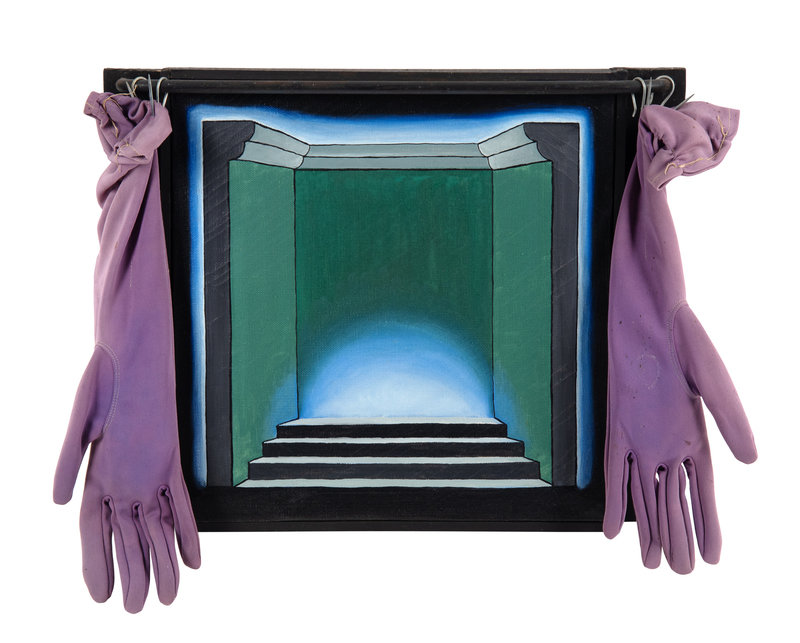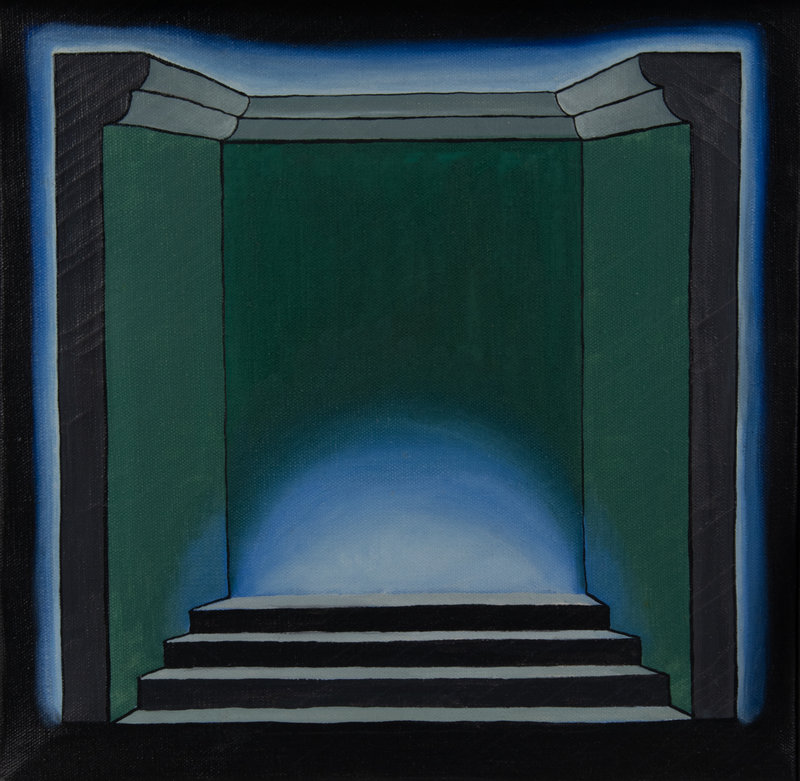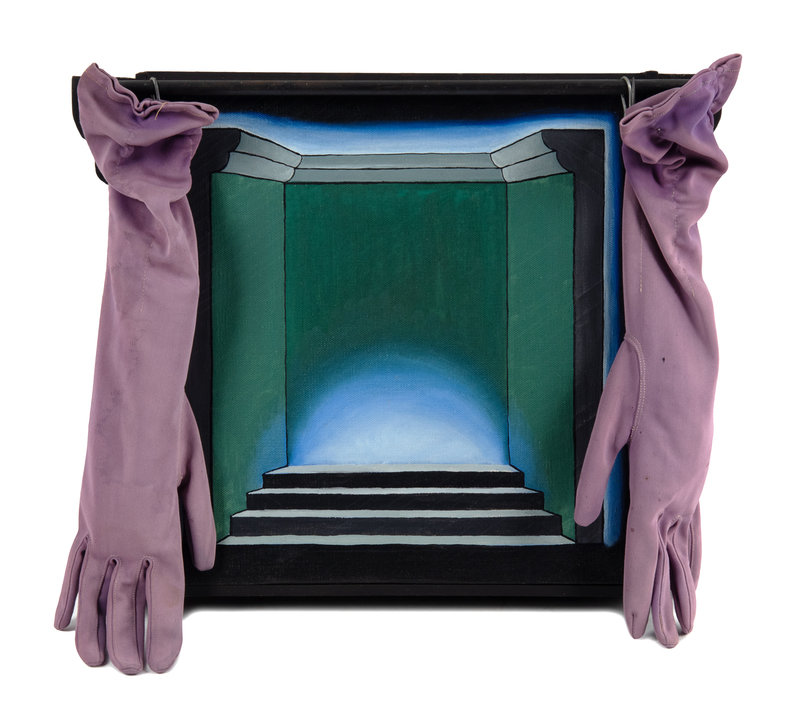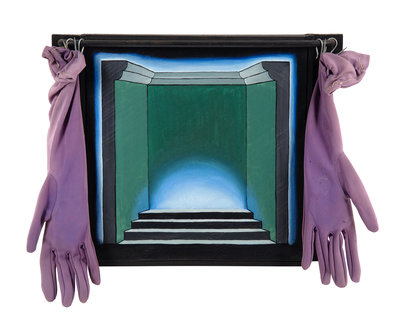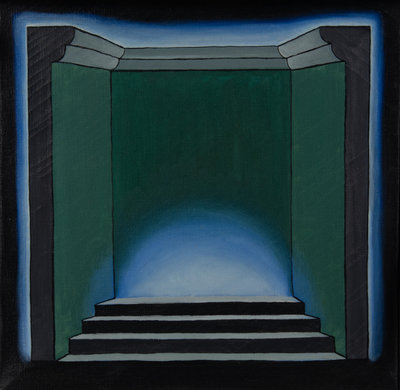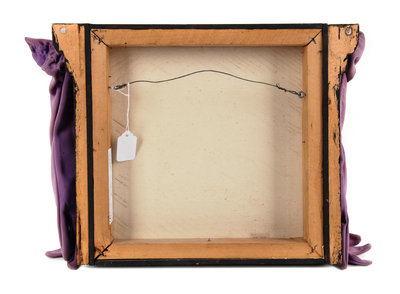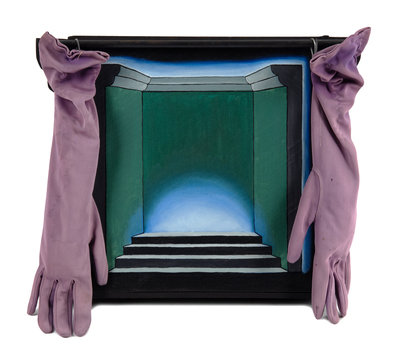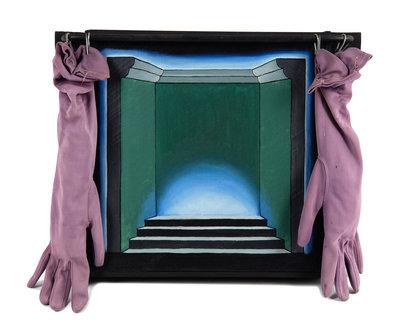Condition Report
Contact Information
Auction Specialist
Lot 6
Roger Brown
(American, 1941-1997)
Untitled (Stepped Stage with Velvet Glove Curtains), c. 1970
Sale 789 - Post War and Contemporary Art
Oct 1, 2020
10:00AM CT
Live / Chicago
Own a similar item?
Estimate
$30,000 -
50,000
Price Realized
$37,500
Sold prices are inclusive of Buyer’s Premium
Lot Description
Roger Brown
13 x 14 inches.
Property from the Collection of Suellen Rocca, Chicago, Illinois
(American, 1941-1997)
Untitled (Stepped Stage with Velvet Glove Curtains), c. 1970
oil on canvas with velvet gloves
13 x 14 inches.
Property from the Collection of Suellen Rocca, Chicago, Illinois
